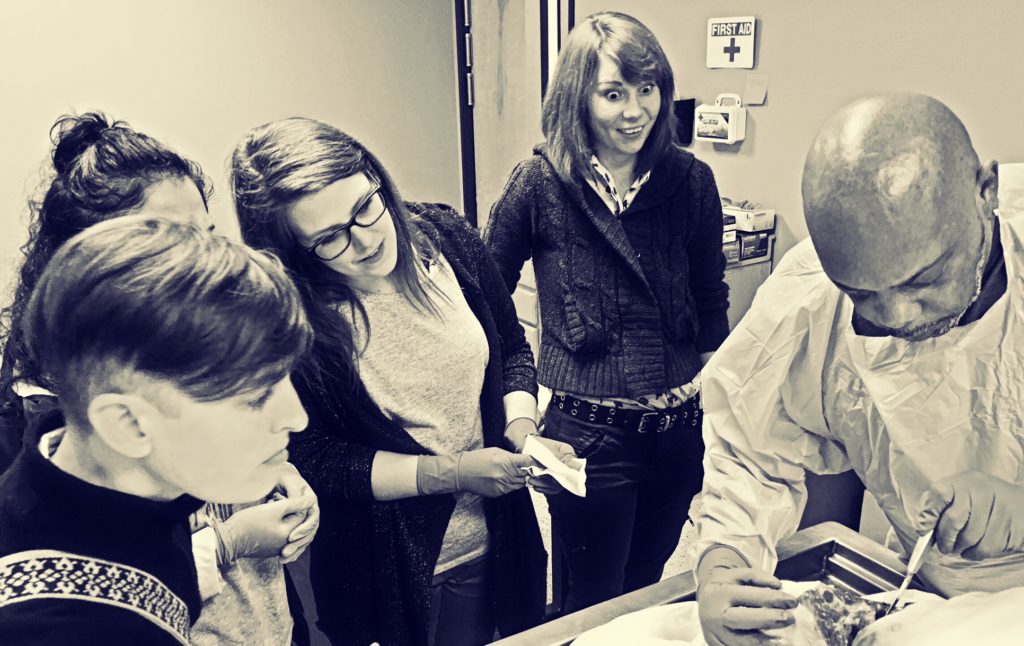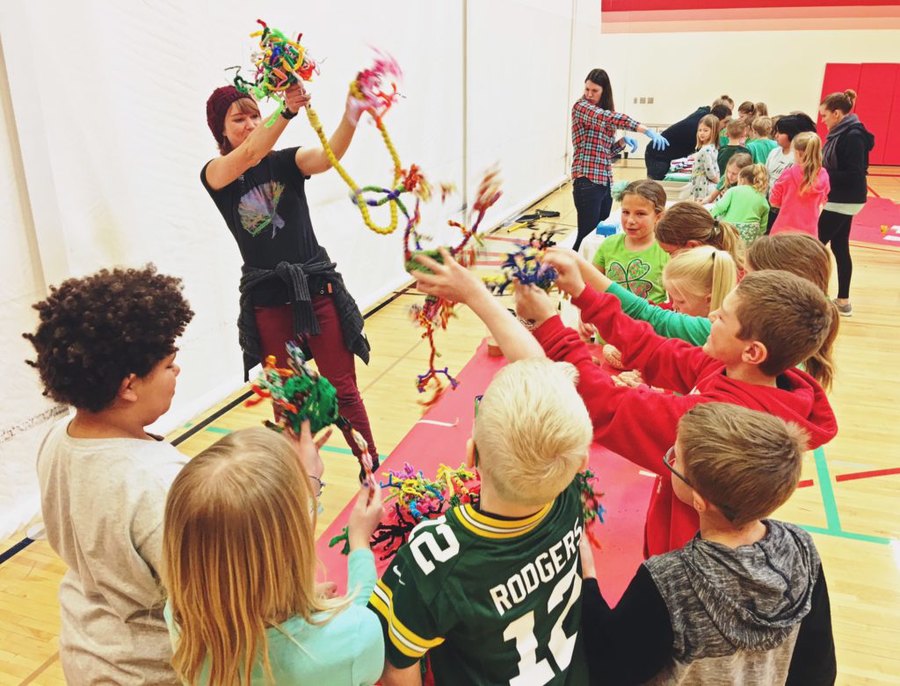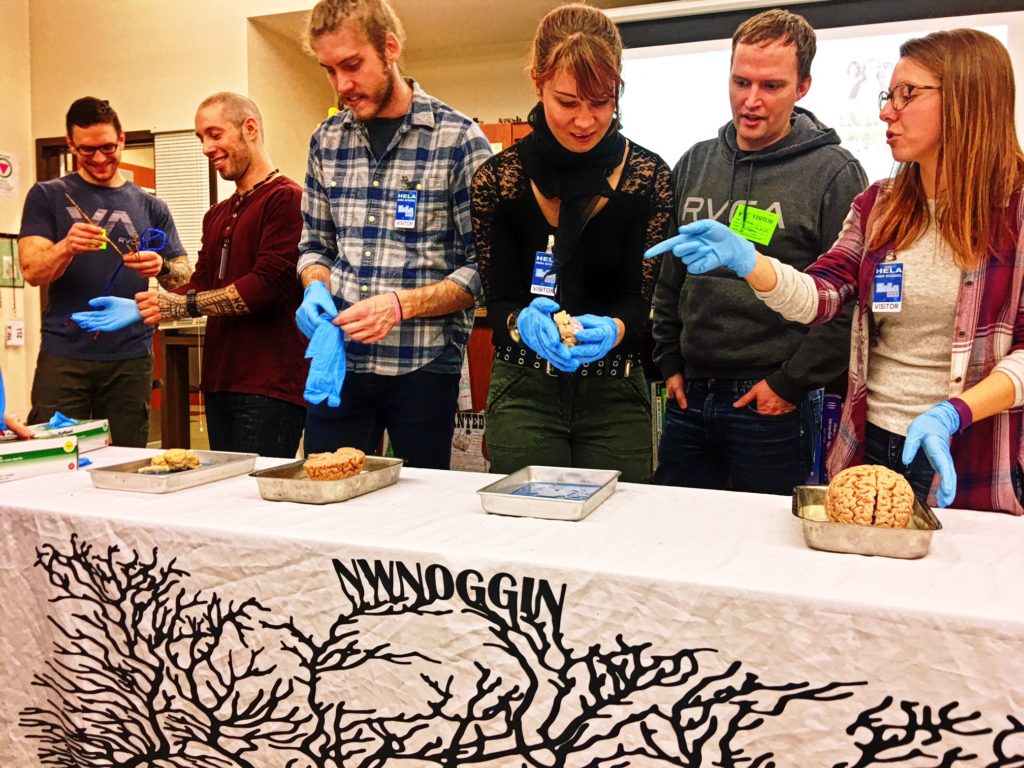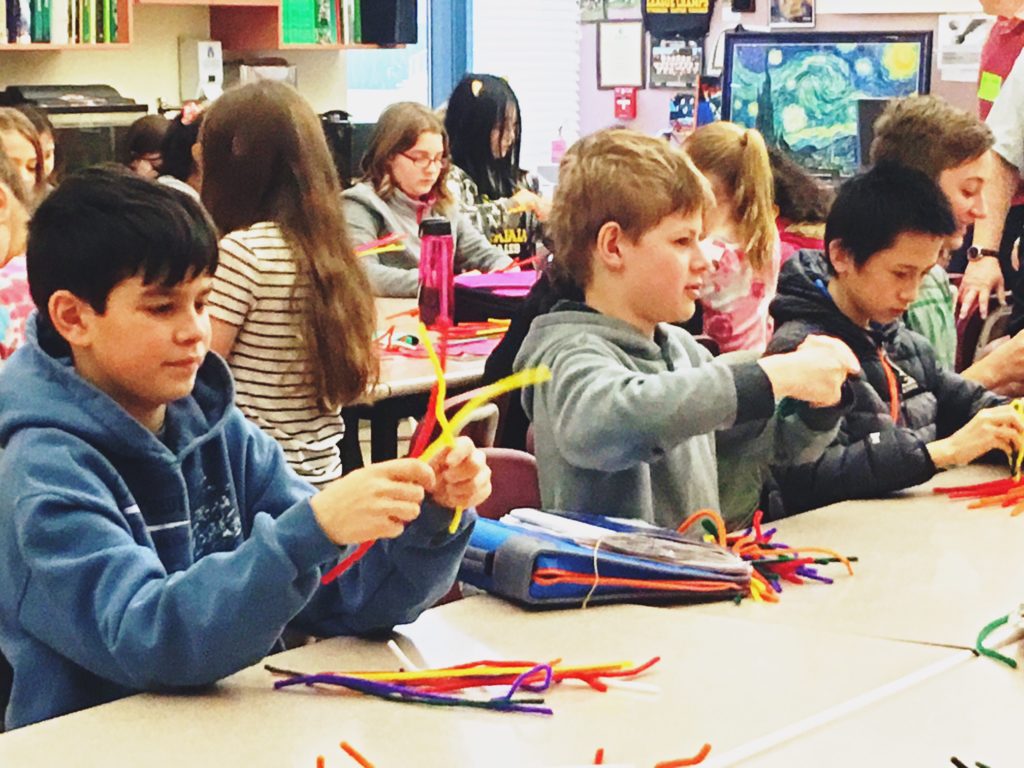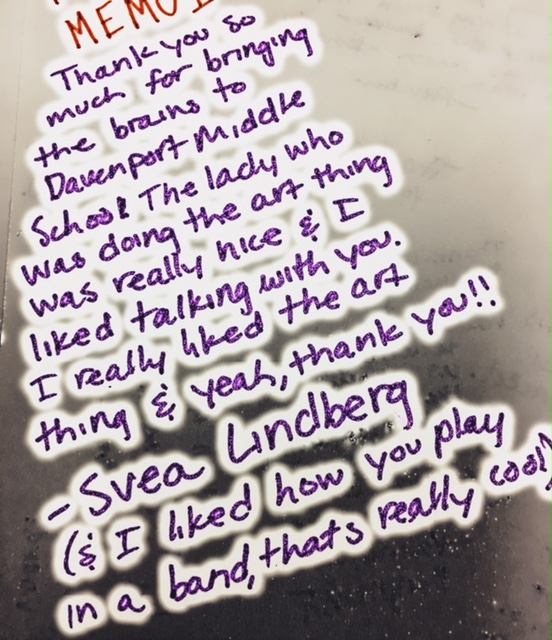What has been your experience with NW Noggin?
It has been difficult for me to begin writing this statement, because when I think about what my experience with NW Noggin has been like, I quickly become overwhelmed with emotion and don’t know how I can put it into words. But I’ll try my best.
NW Noggin has been, hands down, the best part of my undergraduate education. I have taught thousands of kids about the brain. I’ve stood in front of classrooms with kids of all ages and from all sorts of backgrounds, and I’ve served as a role model for so many of them. It’s actually kind of startling when I have moments where I realize that I’m making a lasting impression in a child’s life. When we do multiple visits to the same school over the course of a couple of days, often times there are students from a previous class that repeatedly come back to keep talking with us about the brain. When we leave a classroom, these kids have way more questions about the brain than they did when the class first started, and that’s how science works and we’re getting them to think like a scientist all on their own.
I think the art aspect of NW Noggin is what makes our impact so special and the curriculum so applicable to any age group. Art is a universal language – if you hand some crayons and paper to a child, they can create something and express themselves with it without even having any prior knowledge of how to draw. So I think it’s pretty cool that NW Noggin is using that natural, innate ability to understand art as a means of communicating more complex topics, like science.
The field of neuroscience is very heavily concerned with how we learn, and NW Noggin is taking advantage of how our brain naturally functions. Research has shown us that memorizing specific words that fit only in the context of a one-time test question does not help a student learn a concept. We know that test anxiety is a very real, common experience that instantly makes the typical test-taking experience unfair towards kids who are prone to anxiety. And we know that the best way to learn something is to be as multimodal as possible, and this is why the emphasis on art is so critical in NW Noggin’s curriculum. We allow kids to physically create models of neurons, rather than just stare at it in a textbook. There are no wrong answers in art, and so there is no sense of failure when a student tries to replicate their knowledge via an art project.
Usually, we’ll have a volunteer sit around a table with around 4-5 students, and have casual conversations about the brain while we assemble models of neurons. They’re using their tactile, auditory, and visual senses while also being in the company of an enthusiastic and supportive volunteer. And, by using art projects, we are grabbing the attention of the students who have tuned out during math and science class because they’re highly artistic and have that mindset that art and science are dichotomous fields. Not to mention, art is fun and it’s easy for kids to stay engaged when they are enjoying their experience. One time, while making pipe-cleaner neurons with a couple of first-graders, one of them exclaimed, “this doesn’t feel like school!”
The great thing about teaching students about the brain, is that it is very easy to understand what the brain does – it makes up everything we do, feel and think. So, by introducing students to neuroscience, we are sort of opening up a gate into the realm of science by first showing them, “this is how science directly impacts your life.” Every student understands what dreams, memories, emotions, and movement is, so we can walk into a class and talk about the brain without these kids even needing any previous science background. Once, we got to teach a classroom of middle school students from a small rural town who hadn’t taken any biology classes yet. And during our art project, I had made friends with a few kids who couldn’t wait to take their first biology class next year. How great is that? Middle-schoolers, excited to take biology! And it doesn’t just stop at life sciences- chemistry, physics, and math become less intimidating because they were introduced to the idea of science in a casual, comfortable, and supportive environment.

It’s a pretty incredible feeling when a student opens up to you about their own mental illness, or the addiction that runs in their family. But when they share those things, it’s almost like they’re experiencing a moment of relief. With their newly acquired knowledge about the brain, the way they see their world is different. All of a sudden, their own battles with depression and anxiety actually make sense for the first time in their lives – they have hope about their future. And I know this, because I’ve seen it. I’ve had conversations with students where we comfortably share with each other about our own diagnosis of bipolar, and I get to encourage them to use their unique felt experience of a mood disorder to find a cure for it. Having a mental illness doesn’t disqualify them from studying science; it actually makes them uniquely qualified to study that field. It’s an absolutely wonderful feeling getting to break the good news to them that their brains are valuable, and not diseased.
NW Noggin also gives kids the freedom to ask the questions – we never know what kind of questions or conversations to expect from these kids because they’re all unique human beings that have had different experiences. Some kids might be really into sports, and ask questions about how a concussion during football impacts the brain. Often times we have kids ask about strokes or Alzheimer’s because it has directly impacted one of their family members. By giving the students the freedom to ask whatever questions they would like, we are ensuring that what we are teaching them is directly relevant to their own experience.
‘Be who you needed most when you were a kid’ is a philosophy that I strongly adhere to. And NW Noggin lets me be that encouraging, inspiring, motivating role model that I needed when I was a kid.

For me, the most rewarding part about NW Noggin is the human connections we make with students. When we stand in front of a classroom, we are representing to these students what their future could look like. I really think some of these kids will remember us for a very long time.



